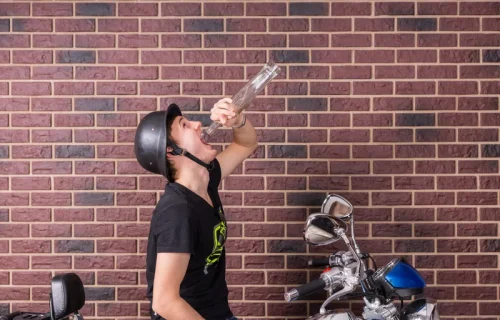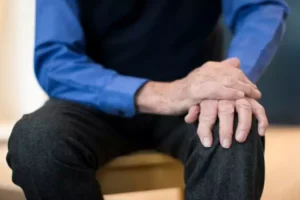
However, the majority of existing research is preclinical, observational or epidemiological, hindering reliability due to the inability to generalise animal-findings to humans and the potential for extraneous factors to impact results in observational research. Looking forward, well-powered, randomised placebo-controlled clinical trials involving target populations are required to provide reliable evidence in this sphere. Studies should assess the impact of various MCRP formulations and dosages on different target populations, including those at risk of developing OUD, those requiring acute detoxification and those stabilised on treatment, and will need to assess safety profiles, especially when combined with known MOUD including buprenorphine, methadone and naltrexone.
Data Sources
- Sub-group analysis among cancer-free adults and cancer-free adults with at least one chronic non-cancer pain condition in the particular year were conducted.
- Cannabinoid-induced modulation of the µ-opioid receptor has been purported to attenuate opioid dependence and addiction development [29, 34].
- Data were referenced accordingly in the below reference list to acknowledge their original investigators.
- Recent opioids is defined as having 1 or more opioid prescriptions during the 12 months before the month of the new cancer diagnosis.
- Therefore, there is a significant demand for research into more efficacious alternative approaches to addressing the opioid epidemic.
- It’s essential that everyone who is concerned with this problem learn about the potential solution that’s right within reach, so we can make this life-saving treatment available for those dependent on opioids.
Pain is one of the most prevalent cancer-related symptoms.1 Opioid therapy remains the mainstay approach to managing moderate to severe pain related to active cancer,2-4 but undertreatment is prevalent5 and may be increasing in the United States. Although patients with active cancer were exempted from recent opioid treatment guidelines intended for chronic noncancer pain,6,7 the literature suggests a rapid decline (20%-40%) in opioids dispensed to patients with advanced cancer.8-11 Clarifying the implications of alternative or adjuvant therapies to manage cancer-related pain is clinically important. Notably, while cannabis may how to overcome alcoholism show promise as a potential MOUD, it should not be considered a standalone solution for opioid addiction [20]. The lack of robust evidence together with inconsistent and varying regulations create legal and ethical challenges for clinicians who are trying to balance patient autonomy with public safety concerns [93, 95]. More research is needed to understand the optimal dosage, treatment duration and long-term effects of medicinal cannabis as a MOUD before it can be recommended in evidence-based treatment plans [64, 85]. The primary outcome of interest is the reduction of opioid dosage for non-cancer chronic pain treatment.
x-on:slide-change.window=”currentIndex = $event.detail.currentIndex”
Bisaga and colleagues compared dronabinol 30 mg to placebo in individuals with OUD undergoing a rapid buprenorphine detoxification; those receiving dronabinol experienced significantly less opioid withdrawal symptomatology than those given placebo. Furthermore, after study participants were successfully initiated on extended-release naltrexone, participants who intermittently smoked cannabis were significantly more likely to complete the 8-week trial than those reporting either regular cannabis use or no use. The goal of this review was to assess the use of MC as an adjunct to opioids to reduce opioid dosage in the treatment of non-cancer chronic pain.
Medical cannabis for the reduction of opioid dosage in the treatment of non-cancer chronic pain: a systematic review
- In the context of the growing opioid crisis, research to improve treatment outcomes among those already taking MOUD is critically needed.
- Despite the concerns, there are some that believe in using marijuana as a form of harm reduction to treat addiction.
- Many people consider ongoing cannabis use to be consistent with being in a state of recovery from opioid addiction.
- Central to this has been the increasing incidence of opioid-related morbidity in the form of dependence and overdose, as well as opioid-related deaths worldwide [2,3,4].
These observations are often used by proponents of cannabis legalization to disregard the possibility that the adolescent use of cannabis may, in and of itself, create de novo risk for the use of opioids or other drugs that otherwise would not exist. This review discusses recent scientific discoveries that address neuropathophysiological mechanisms whereby cannabis use could biologically introduce additional risk for the likelihood of opioid initiation, dose escalation, and OUD that otherwise might not occur within the same individual. The difference-in-differences design relies on an important assumption that, in the time leading up to policy implementation, outcomes in states that ultimately implemented medical marijuana legalization followed a parallel trend vs outcomes in states that had not yet implemented medical marijuana legalization. Ethics approval was not required for the generation of this review given that the data and findings reported were derived from open-access and freely accessible literature from medical databases. In addition, this article is based on previously conducted studies and does not contain any new studies with human participants or animals performed by the authors. The Recovery Village aims to improve the quality of life for people struggling with substance use or mental health disorder with fact-based content about the nature of behavioral health conditions, treatment options and their related outcomes.

Challenges and Limitations in the Implementation of Medical Cannabis
A number of these cannabinoid-based medications are already showing promising results in preclinical studies [31]. It’s essential that everyone who is concerned with this problem learn about the potential solution that’s right within reach, so we can make this life-saving treatment available for those dependent on opioids. For this reason, I have created guidelines based on my experience treating chronic pain with cannabis in 8 years of clinical practice, conferring with my colleagues, and closely following the scientific literature.

Marijuana Addiction Treatment

While this review indicates the likelihood of reducing opioid dosage when used in combination with MC, there are shortcomings. Further, studies are needed to gradually increase MC dosage titrated against a reduction in opioid dosage until an optimal pain relief effect is attained. A more notable concern is the fact that none of the included studies discussed potential adverse effects of using MC as an adjunct to opioids.
© 2024 Harvard Health Publishing® of The President and Fellows of Harvard College
Results of the event study analysis suggest that medical marijuana legalization’s association with 1 or more opioid days, if any, was not seen until the third or fourth year after policy implementation (eFigure 2 in the Supplement). Medical marijuana legalization’s association with pain-related hospital events among patients with lung cancer, however, was seen as early as the second half of the first year after implementation. Main Outcomes and Measures Having 1 or more days of opioids, 1 or more days of long-acting opioids, total morphine milligram equivalents of any opioid dispensed to patients with 1 or more opioid days, and 1 or more pain-related emergency department visits or hospitalizations (hereafter, hospital events) during the 6 months after a new cancer diagnosis. Interaction terms were included between each policy indicator and an indicator of recent opioids, defined as having 1 or more opioid prescriptions during the 12 months before the new cancer diagnosis. Logistic models were estimated for dichotomous outcomes, and generalized linear models were estimated for morphine milligram equivalents. The risk of developing OUD is multifactorial and often driven by genetic and familial risk factors, environmental risk factors (trauma history, social networks, other exposures), and untreated psychiatric comorbidity.
action: ‘healthbeat’
Evidence Based Reviews on Cannabis Therapy
- Yafai told Medical News Today the study didn’t account for dosage, type of cannabis, how it was administered, or levels of the active ingredient THC.
- Two thousand, four hundred and forty (2440) titles were remaining after the removal of duplicates; 2410 titles were ineligible and screened out at the abstract stage.
- The information we provide is not intended to be a substitute for professional medical advice, diagnosis or treatment.
- These findings provide promising rationale for the use of CBD in opioid relapse prevention in humans.
- Furthermore, the implementation of these regimens has led to far-reaching societal benefits, including a significant reduction in opioid-related mortality as well as a reduction in social adversity in the form of reduced crime and incarceration rates (8, 12).
- A number of these cannabinoid-based medications are already showing promising results in preclinical studies [31].
